How to Draw Medieval Art Figures
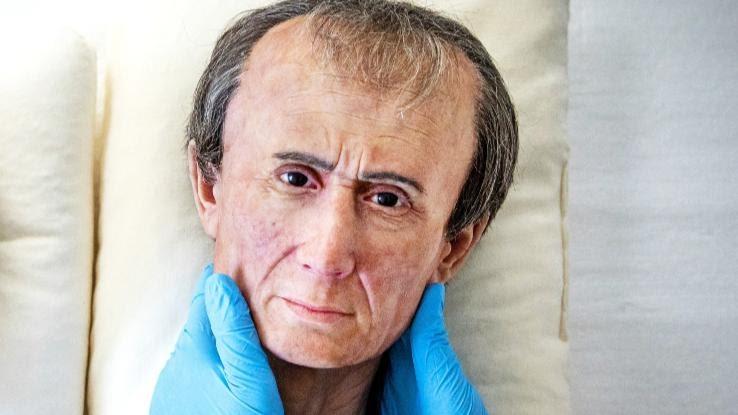
Although you may have vague ideas of what some of the most famous figures in history looked like, you might be surprised at their real appearances if you could see them in person. Using genealogy and historical records, researchers have been able to reconstruct the real-life appearances of some of history's most famous people in stunning detail.
Take a look at these incredibly detailed reproductions of historical figures to see how close they come to the illusion presented in paintings and drawings throughout history.
King Tut: The Face We All Know
Although King Tutankhamun, or "King Tut," is one of the most recognized pharaohs in the world today, that wasn't always the case. He ruled over ancient Egypt for a short decade from 1334 to 1324 B.C. After he died, his name more or less faded into obscurity. In 1922, however, an archaeologist named Howard Carter gave King Tut a second shot at stardom.
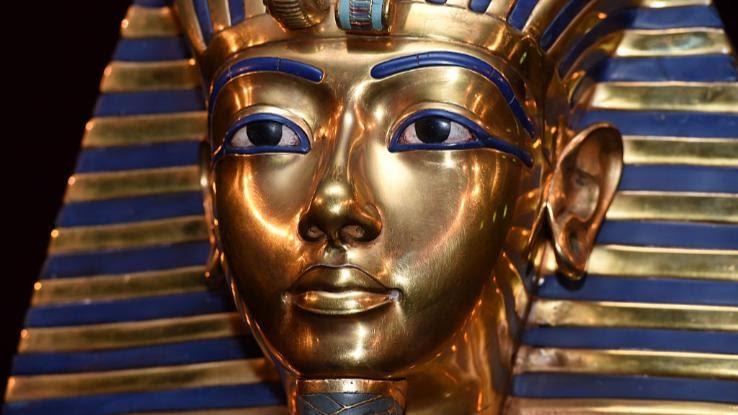
When Carter discovered King Tut's tomb, the world was fascinated by the golden treasures that had been buried alongside him. Although most people picture him looking like the handsome face carved into the gold of his coffin, scientists have now discovered that his genetics tell a different story.
Researchers took into account more than 2,000 digital and CT scans as well as genetic analysis when building a realistic image of King Tut's appearance. What emerged was a picture of a frail boy with a large overbite who died at just 19 years old.
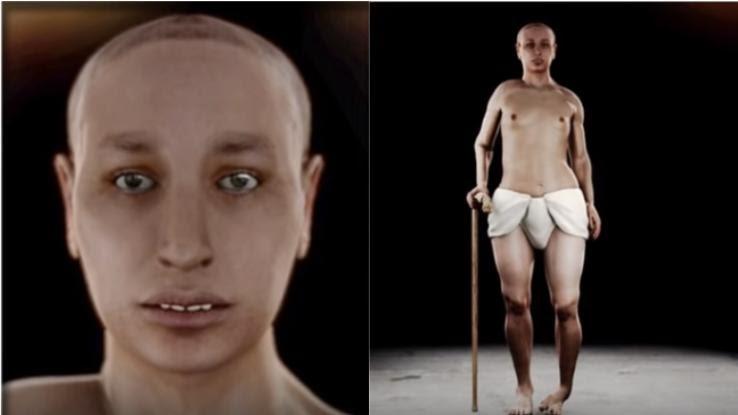
His early death may be explained by his history of malaria, a fractured leg injury and several congenital deformities that were probably caused by the Egyptian custom of inbreeding among royal families. Although the practice was meant to keep royal bloodlines pure, the fact that King Tut's parents were also father and daughter quite possibly contributed to his clubbed foot and malformed hips.
Nero: History's Most Notorious Roman Emperor
Nero Claudius Caesar Augustus Germanicus, usually simply referred to as Nero, was the ruler of Rome from 54 to 68 A.D. Although his legacy still lives on today, few things about it are flattering. Nero considered himself a world-class artist, but he's mostly remembered for being a first-class sociopath who murdered countless people.
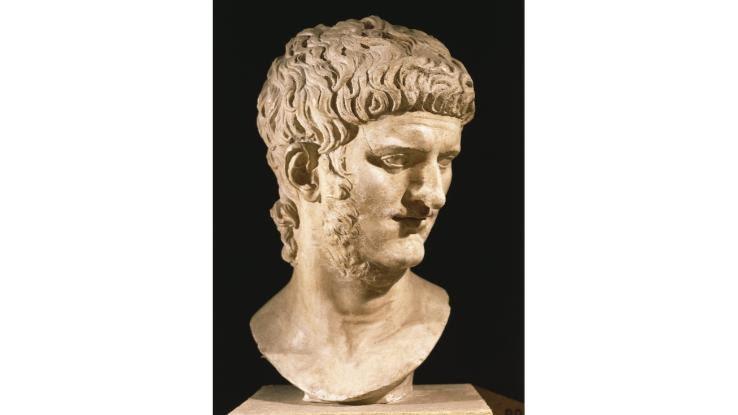
Surprisingly, during the first part of Nero's reign, history actually records him as being a pretty laid back and competent ruler. However, by the time Rome burned to the ground in 64 A.D., his reputation had gone so far downhill that a popular rumor even suggested he started the fire himself.
Nero: The Face of an Ancient Madman
While the disturbing neck beard makes him look questionable enough, everything about this lifelike rendering of Nero is just downright creepy. The artist who brought Nero to life took into account several classic depictions of the emperor, from coins created in his own time to a 17th century bust from the Musei Capitolini in Rome.
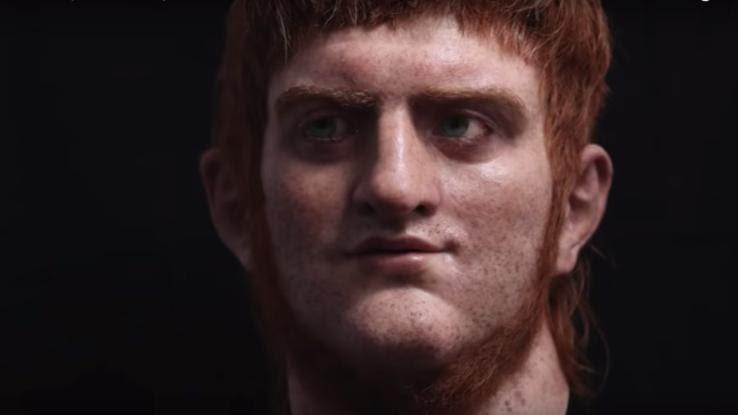
Nero's haunting eyes were inspired by historical accounts that describe them as somewhere between gray and blue. Given how insane he turned out to be, the Romans eventually had enough of Nero's murderous rampages and revolted. Before he could be executed, however, the emperor took matters into his own hands and committed suicide, declaring, "What an artist dies in me!"
The Famous Sculpture of Queen Nefertiti of Egypt
Queen Nefertiti made a name for herself in both her own time and the present by being one of the few women who may have ruled ancient Egypt independently. She ruled alongside her pharaoh husband from 1353 to 1336 B.C., but a wide array of evidence also suggests she continued to rule as queen after he passed away.
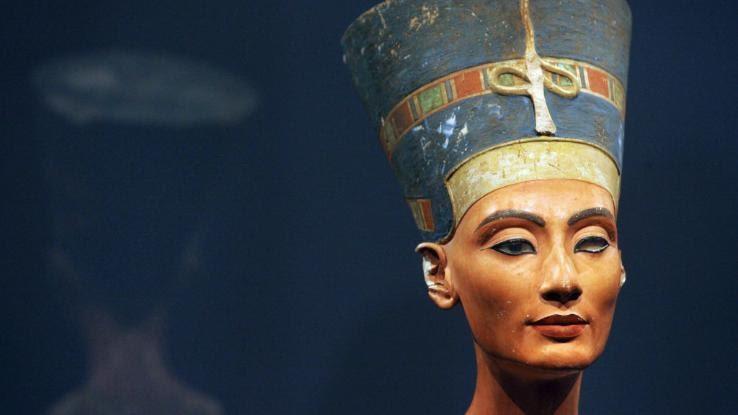
In 1913, a German archaeologist named Ludwig Borchardt discovered an ancient sculpture of Nefertiti's face in Egypt. It depicted Nefertiti as a stunningly beautiful woman, but one of the most fascinating things about it wasn't discovered until 2009. While conducting a CT scan of the sculpture, researchers discovered there was a whole other statue hidden inside the original.
Nefertiti: The Beauty Beneath the Surface
It's widely believed that the limestone "statue within the statue" was a more realistic portrait of the queen that was never meant to be discovered. Researchers were able to use CT scanned images of the hidden statue to reconstruct what Nefertiti quite possibly looked like.
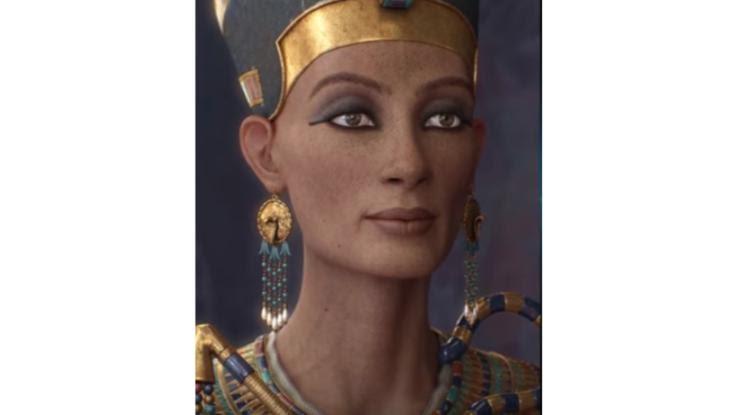
While still absolutely gorgeous, the hidden statue reveals a more human face with wrinkled cheeks and a small nose bump. Nefertiti is also famous for being both the stepmother and grandmother of King Tut, as the boy pharaoh was the child of her husband and one of her daughters. Remember, inbreeding was common for Egyptian royalty, none of whom had any idea it caused such health issues.
Robert the Bruce as Depicted by History
Robert the Bruce was a Scottish King who ruled from 1306 to 1329 A.D. Ironically, he took the throne at a time when King Edward I still considered Scotland part of English territory. Scotland obviously disagreed and engaged in a war with England to gain independence.
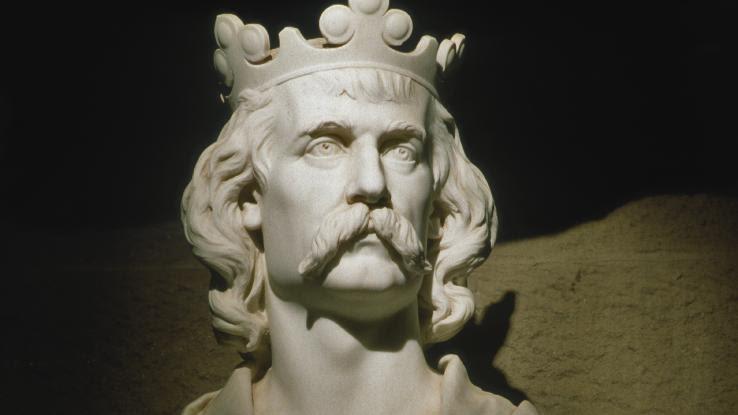
Various battles in the war were depicted in the movie Braveheart, which also includes Robert the Bruce as a character. Robert ultimately did help his country achieve freedom in the 1314 Battle of Bannockburn. Many historians agree that if it weren't for his success, Scotland might not exist as a country today.
A Skull Cast Unlocks Robert the Bruce's Appearance
In order to determine what the Scottish ruler looked like, historians from the University of Glasgow and face lab specialists from the University of Liverpool worked together to undertake a two-year project. Their reconstruction of the king's face was largely based on a cast made from Robert's skull.
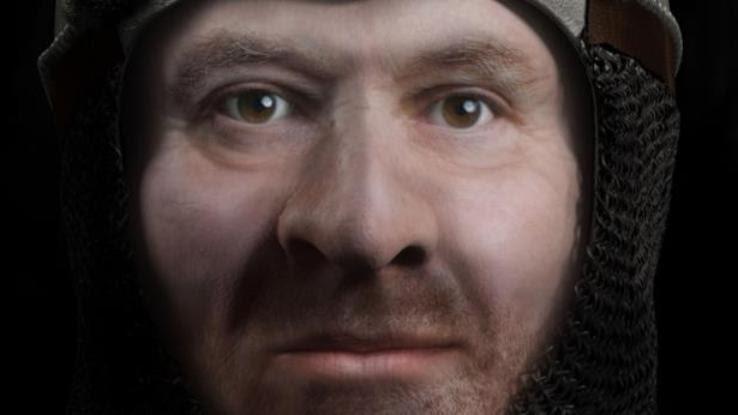
Although the team had to make their best guess in determining Robert's coloring, the skull cast went a long way in helping them reconstruct his facial shape and muscles. The researchers actually created two versions of the famous Scot's face, the one you see above and a second one that shows what he would have looked like after contracting leprosy, the disease that killed him in 1329.
Cleopatra: What We Think She Looks Like
When you picture Cleopatra, you probably think of a strikingly beautiful Egyptian queen. You may even imagine her as looking similar to Elizabeth Taylor's portrayal in the 1963 film Cleopatra — but you would be wrong on both counts.
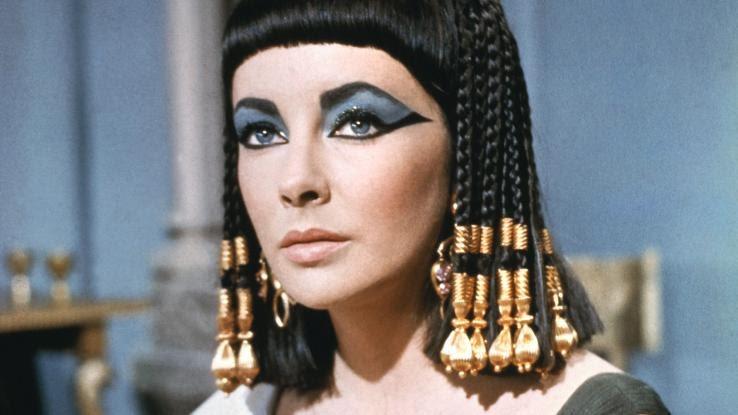
First of all, Cleopatra wasn't really of Egyptian descent. (Shocking, right?) Although she was born in Egypt and ruled as its last queen, she actually had Macedonian Greek heritage. She did embrace the Egyptian culture she grew up in, but most of what is known about her comes from Greco-Roman scholars. Was she really as enchanting as her legend claims? Well, yes and no.
Cleopatra: Beauty Is in the Eye of the Beholder
Sally-Ann Ashton, an Egyptologist from Cambridge, spent more than a year attempting to piece together what the famous Egyptian queen really looked like. For clues, she looked to Cleopatra's genealogy, her depiction in ancient temple decorations and her portrayal on coins from her own time. Ashton also used a marble bust from 40 to 30 B.C., which many scholars consider to be the most accurate ancient depiction of the queen.
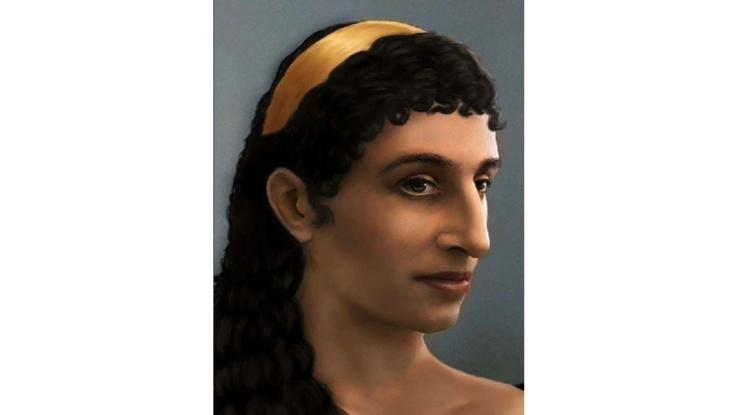
She came to the conclusion that Cleopatra's nose was actually a bit large, her lips thin and her features almost masculine. That said, even the Greek historian Plutarch admitted the queen wasn't necessarily beautiful, but he described her personality and intelligence as bewitching.
Julius Caesar as Depicted by Hollywood
Julius Caesar may have had one of the most epic careers in the history of war, and his death is still considered a tragedy to this day. After his successful military exploits led to growing political prominence, he formed an alliance called the First Triumvirate with two other famed Roman conquerors in 60 BC.

When one of the two other members died, Julius Caesar and the other surviving member, Pompey the Great, went to war to see who would win control of the empire. In the end, Caesar won the throne and became one of the most powerful men in the ancient world.
The Actual Julius Caesar: Talk About Having a Big Head
Although he once won the heart of Cleopatra and became one of the most legendary leaders in Roman history, Caesar's looks may not have been his strong point. During the civil war with Pompey, a bust was created that depicted the famous conqueror's face and upper body.
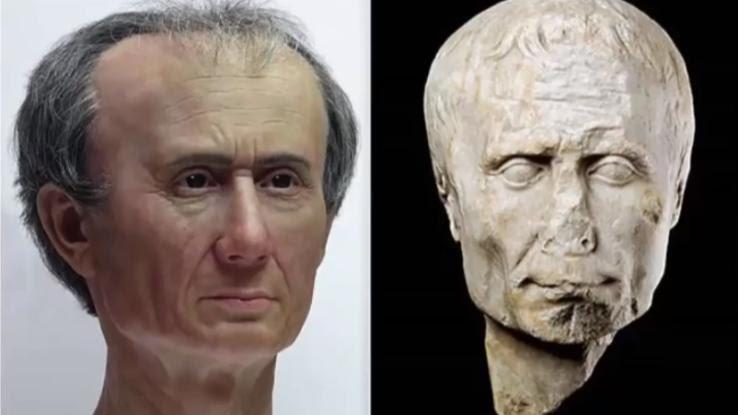
The ancient artwork was used to help researchers recreate Caesar's surprising looks. As you can see, his prominent head and forehead were so large they almost eclipsed his other facial features. The emperor met his tragic end on the infamous Ides of March in 44 B.C., when he was betrayed and stabbed to death on the Senate floor.
Queen Elizabeth I in the Famous Armada Portrait
When it comes to English royalty, Queen Elizabeth I was definitely one of the greats. She took the throne in 1559 after the death of her sister and enjoyed a successful reign until her death in 1603. During her time in power, she settled highly volatile political-religious rifts of the time, defeated the Spanish Armada and promoted a flourishing arts culture that produced greats like William Shakespeare.
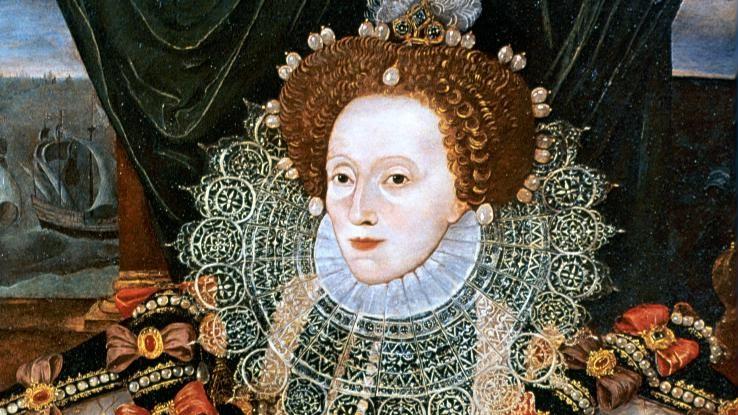
The fact that she never married led her to be nicknamed "The Virgin Queen," but what did the queen who refused all suitors actually look like? Due to the heavy makeup and wigs of the time, it's likely that not many of her own subjects even knew the answer.
Meet Animatronic Elizabeth
Artist Mat Collishaw was able to use a portrait at the Queen's House in London, along with research, scans and 3-D printing, to recreate the face of Elizabeth I. No, as it turned out she didn't look exactly like Cate Blanchett in Elizabeth. You can check out Collishaw's reproduction for yourself at the Queen's House in Greenwich, London.
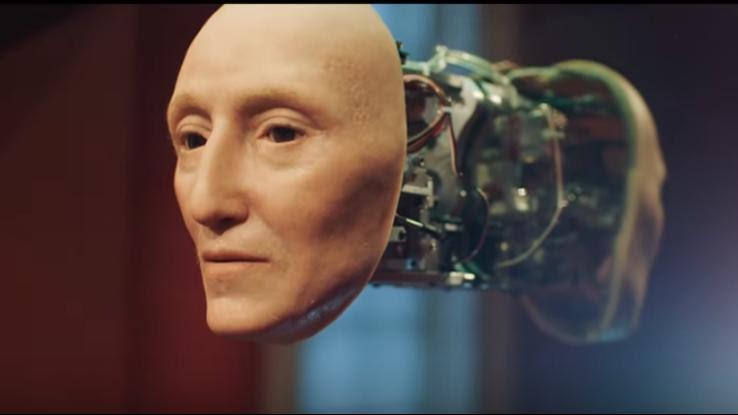
Displayed directly across from the Queen's famous Armada portrait, the creation not only shows what Elizabeth would have looked like beneath all that make-up, but it also demonstrates how her face might have moved. The eerily lifelike animatronic face has blinking eyes and moves in a way that makes it appear to be thinking. Not creepy at all, right?
William Shakespeare: How Most People Picture the Bard
Today, William Shakespeare is still considered one of the most influential playwrights who ever lived. During his life (1564-1616), he crafted at least 38 different plays and a number of sonnets that are largely credited for revolutionizing the English language.
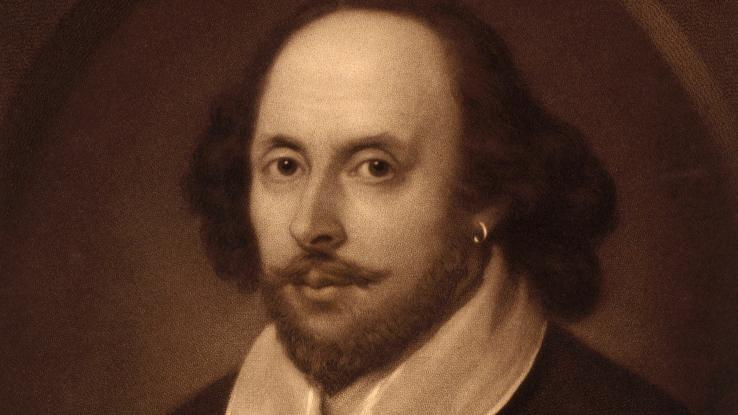
Although a number of conspiracy theories claim that Shakespeare was actually a front for another playwright, possibly even a woman, we at least know that the man actually existed. Given how popular his works remain today, you can be sure he was either the world's best playwright or history's most amazing frontman. But did the bard actually look like his paintings?
Shakespeare: The Man Behind the Mask
A small number of original drawings and paintings of Shakespeare still exist today, but researchers had access to something far more helpful. Back in Shakespeare's day, a clay mold was sometimes used to create a death mask of a person's face to show what they looked like when they died.
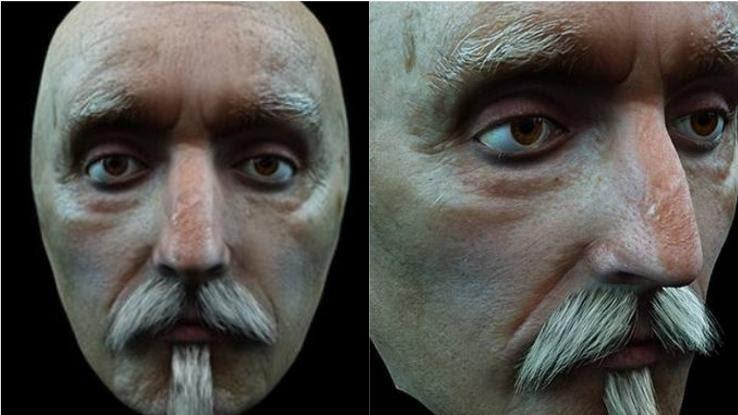
Dr. Caroline Wilkinson from the University of Dundee was able to create a realistic 3-D image of Shakespeare by using a computer scan of the bard's actual death mask. With the help of the scans, it was possible to see an incredibly detailed reconstruction of the older Shakespeare's face as it looked in April of 1616.
President George Washington: America's Most Famous Face
Considering that his portrait is on every American dollar bill in circulation, George Washington's face may be one of the most instantly recognizable faces in the United States. As the commander-in-chief of the Continental Army, he played an important role in helping America defeat the British in the Revolutionary War.
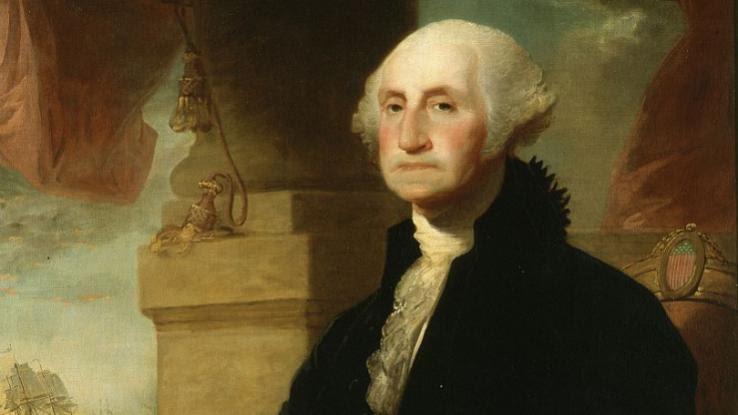
He was so respected for his role as one of the nation's founding fathers that he went on to become the first President of the U.S. from 1789 to 1797. For help in reconstructing a realistic representation of the famous president, researchers turned to an old portrait of Washington that was saved from a White House fire by First Lady Dolley Madison in 1814.
A Lifelike Reconstruction of America's First President
Researchers from New Jersey Medical School did an incredible job of bringing Washington's features to life. Everyone is already familiar with his profile and famous white wig, but this high-tech facial reconstruction makes Washington's famous blue eyes look like something out of a photograph.
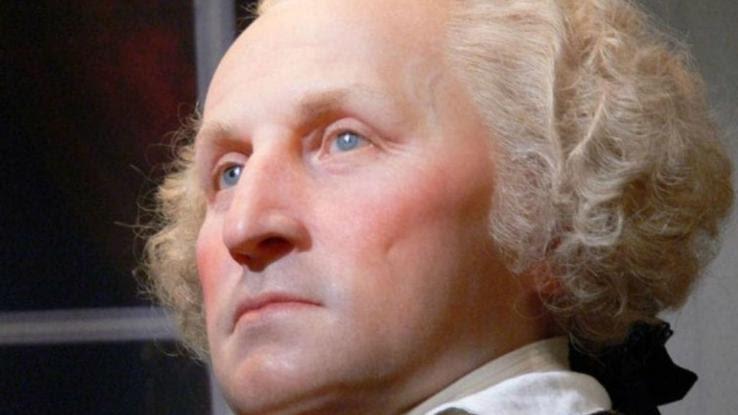
As one of the most important figures in the history of the United States, Washington portrayed in such a realistic light makes him seem even more human and more impressive. Most of all, the artists did an incredible job of showing his legendary bravery and nobility in his features.
Mary, Queen of Scots from Paintings in Her Own Time
Mary, Queen of Scots, or Mary Stuart, was the queen of (you guessed it) Scotland from 1542 to 1567. Unfortunately, she didn't get much training for the role due to the fact that she inherited the throne just six days after she was born.
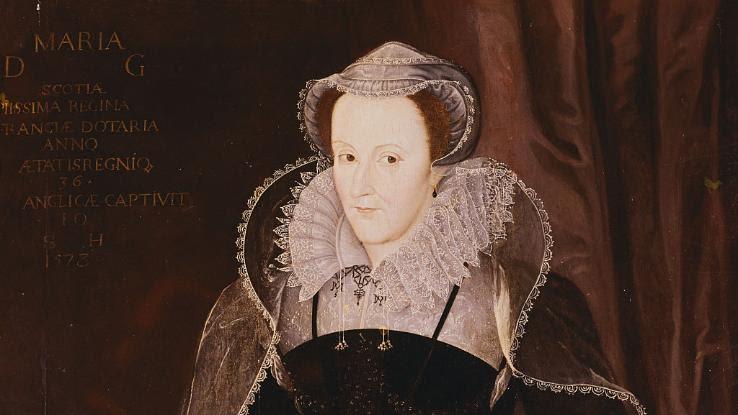
At a young age, Mary's mother sent the queen to grow up and train in the French court, where she lived until returning home in 1559. Things might have gone more smoothly for her if she hadn't claimed many years before to be the rightful heir to the throne of Queen Elizabeth I of England. After she was forced to abdicate her throne, Elizabeth held her prisoner for almost two decades.
A Realistic Representation of Mary, Queen of Scots
Although you might think she would have learned her lesson about the dangers of plotting against Elizabeth, that might not have been the case. The truth is subject to debate, but Elizabeth believed Mary continued to plot against her and had her beheaded after years of imprisonment.
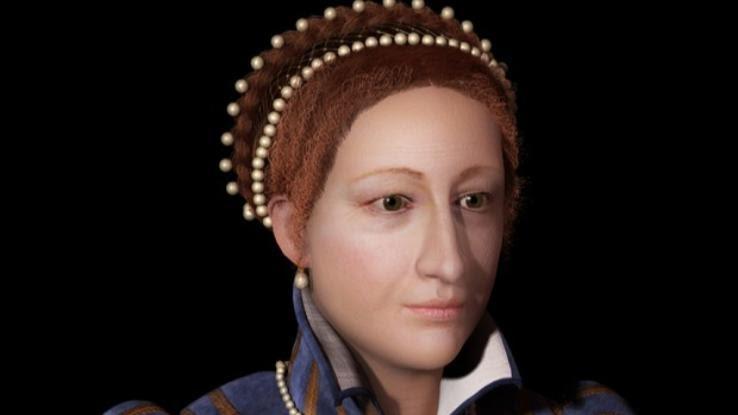
Dr. Caroline Wilkinson of the University of Dundee decided to find out what the tragic queen looked like by researching drawings and paintings of Mary. She also conducted research into biographical accounts of Mary's appearance to avoid getting off track due to the stylization of the artwork from the period. Based on the results, she looked like an average woman of average attractiveness that you might bump into at the grocery store.
Richard III as He Is Commonly Portrayed on Stage
Although he only ruled England for two years (1483-1485), Richard III's name lives on in infamy. One of the reasons he's still so recognizable is because Shakespeare wrote one of his most famous plays about him. If you've ever read or seen the play, then you may picture him as a horribly deformed hunchback with withered limbs and a debilitating limp.
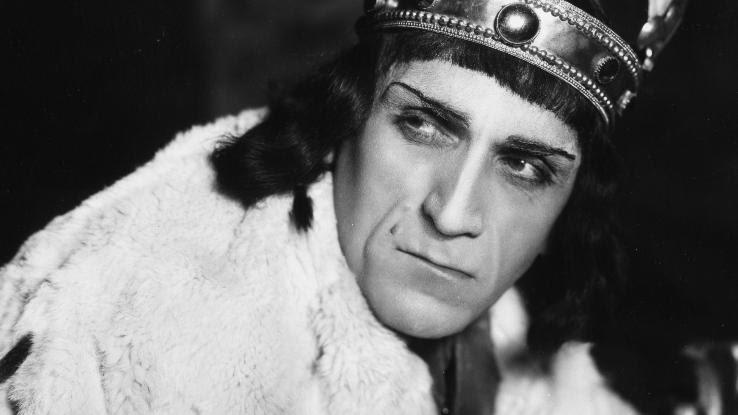
Interestingly, scientists could neither confirm nor deny the validity of this interpretation of his appearance until 2012 when his body was finally found buried beneath an underground parking lot. As it turned out, the King may have looked a little different than you or Shakespeare imagined.
Richard III's Actual Appearance
Researchers discovered that Shakespeare had gone a tad overboard in his depiction of Richard III, who wasn't actually a hunchback at all. As it turned out, he just suffered from scoliosis, which may have made one of his shoulders a little higher than the other.
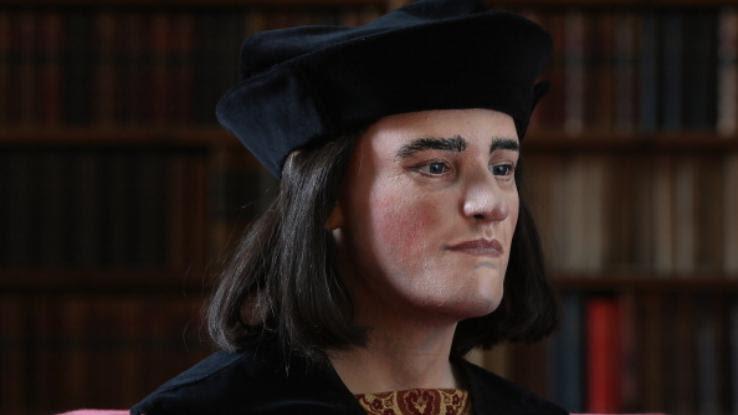
A team of researchers used a combination of Richard's skull and historical research to recreate the appearance of the infamous king. Surprisingly, Richard wasn't a bad looking guy. Unfortunately for him, he met his end in 1485 when he led an ill-fated charge into an army of Tudors, who quickly cut down both the king and his men. If he was guilty of murdering his two young nephews to steal the throne (as most believe), then justice prevailed.
Jesus Christ: The Most Famous Face in Western Art
As the center of the Christian religion, Jesus Christ of Nazareth has been depicted in more Western art than any other figure in history. Ironically, much of the artwork in which Jesus has been featured depicts him as a long-haired Caucasian rather than the more realistic Jewish man he was.
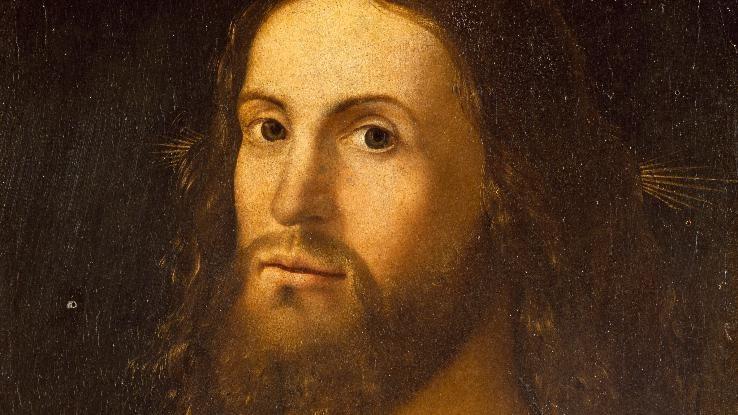
Although plenty of controversial opinions have been thrown around regarding the general appearance of Christ, the truth is we may never know exactly what Jesus looked like. However, with the help of a forensic anthropologist named Richard Neave, it may be possible to get a better idea.
An Average Man from Christ's Own Time and Region
In 2001, Neave worked on the skull of a Galilean man that was found in the region where Jesus lived. Although it's not meant to show exactly what Jesus looked like, it provides a good example of the appearance of an average man of his age, time, race and region.
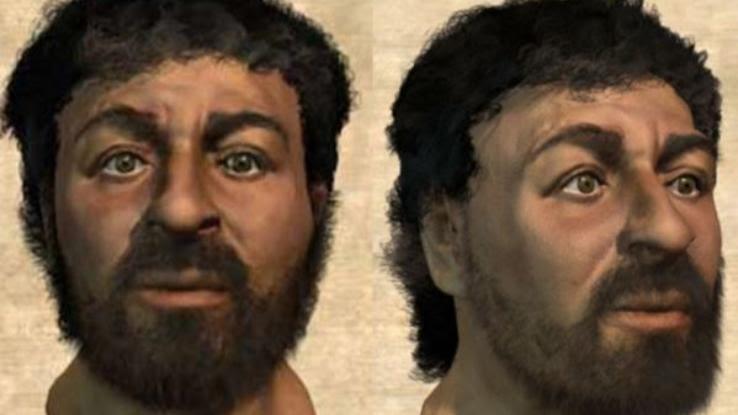
It may not be the definitive authority on Jesus' physical appearance, but it's probably a lot more accurate than the stereotypical representations of Jesus in most art. The long-haired, bearded look was actually the product of the 4th-century Byzantine era and is thought to have been based on an emperor from that time.
Saint Anthony as Shown in Stained Glass Everywhere
If you know anybody who is Catholic, then the odds are good that you may someday hear them ask Saint Anthony for a little help in locating their lost car keys. Among the favorite saints of the Catholic church, Anthony is the patron saint of lost things and was declared the "Doctor of the Church" by Pope Pius XII in 1946.
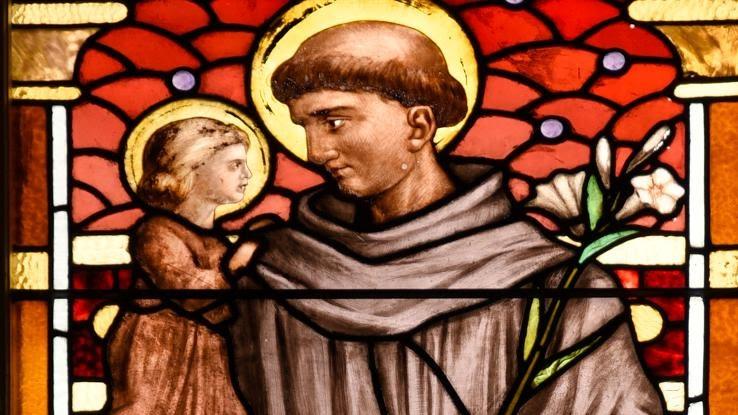
The second fastest person ever to be canonized as a saint, Anthony was born in Portugal in 1195 and only lived to be 36 years old. In his own time, he was famous for his incredible sermons, knowledge of scripture and undying devotion to the sick and poor.
Saint Anthony as Recreated by Researchers
In 2013, a group of researchers from The University of St. Anthony of Padua's Anthropology Museum teamed up with international forensic experts to recreate the famous saint's appearance. Using a 3-D digital copy of Anthony's skull along with research from his era, the team was able to reproduce the face of a man you instinctively want to hug.
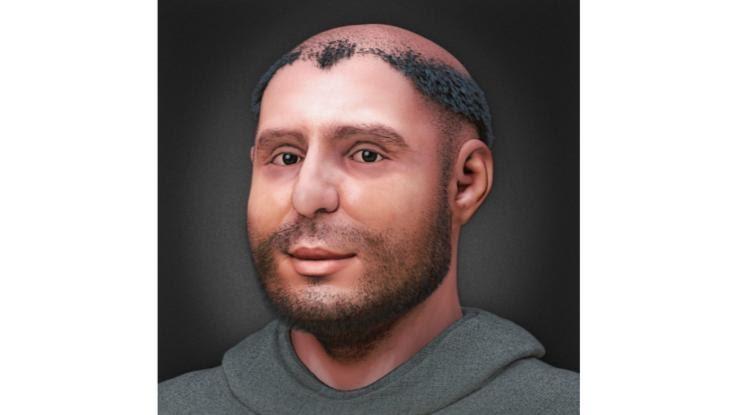
With his caring eyes and gentle smile, Anthony's reconstructed face seems to radiate the kind of love that could definitely launch someone into sainthood. If you happen to be Catholic yourself, it's definitely worth taking a mental snapshot so you can picture who you're talking to the next time you ask for a little intercession.
King Henry IV as Shown in Art
King Henry IV of France is often referred to as "Good King Henry" due to his insistence on religious tolerance at a time when it definitely wasn't popular. Raised as a Protestant, Henry became the King of Navarre in 1572 after his mother passed away. Soon after, he was married to Margaret of Valois, the daughter of Henry II and Catherine de' Medici.
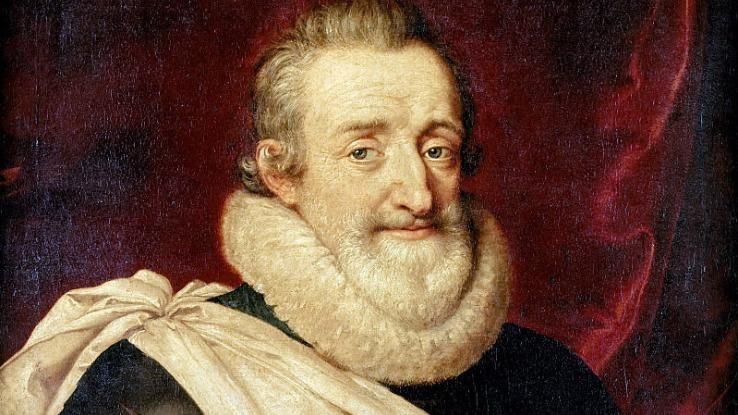
His wife's family was Catholic, and the hope was that the match would lead to peace between the warring Protestants and Catholics of the time. Such hopes did not last long, instead leading to the St. Bartholomew's Day Massacre, in which Henry barely escaped with his life.
The Good King's Real Face
In 1589, King Henry's marriage led to his inheritance of the French throne, and he ultimately converted to Catholicism. Despite his conversion, he issued what was known as the Edict of Nantes, which gave Protestants their fair share of rights in the Catholic nation. His views weren't popular with everyone, and after surviving 12 assassination attempts, he was finally killed by the 13th.

Forensic pathologist Philippe Charlier teamed up with facial reconstruction specialist Philippe Froesch to recreate this incredibly lifelike portrayal of the famous king. Although he met his end in 1610, Henry's kind face and legacy live on to this day.
Johann Sebastian Bach: The Face of Classical Music
Even if you're not a huge fan of classical music, it's almost impossible to make it through life without hearing the music of Johann Sebastian Bach. Born in 1685, the German composer is still regarded today as one of the greatest composers in recorded history.
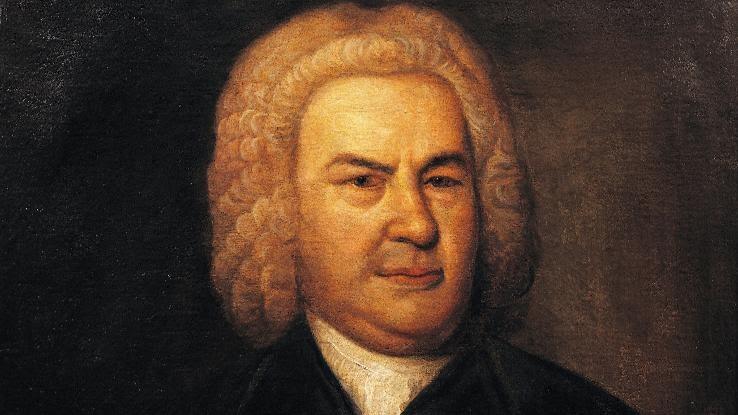
His music career started at a young age and was helped along by the fact that his father, Johann Ambrosius, was a court trumpeter for the Duke of Saxe-Eisenach. He went on to compose masterpieces such as his Brandenburg Concertos, which many musicians claim accomplished in six concertos what would have taken most composers dozens.
What Bach Looked Like in Real Life
Dr. Caroline Wilkinson from the University of Dundee, who was also responsible for the reconstruction of Shakespeare's face, decided to work her magic on Bach as well. This proved a bit tricky since the composer was buried in an unmarked grave in 1750.
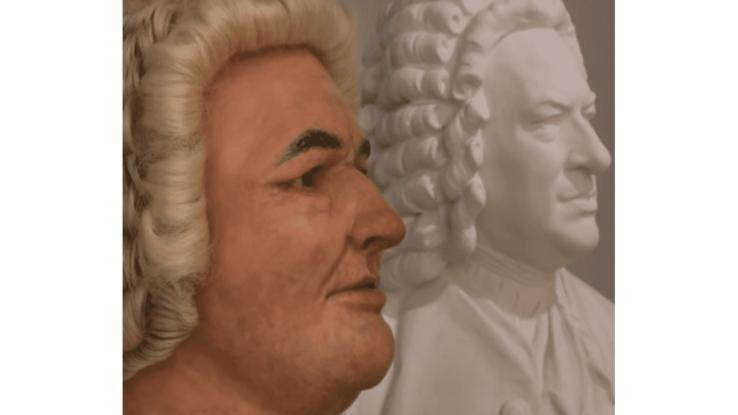
Research led to a church that was believed to contain the grave belonging to the famous composer. As luck would have it, the church was undergoing repairs at the time, and researchers were able to exhume Bach's skull long enough to make a cast. With the skull cast and her other research to guide her, Dr. Wilkinson was able to produce the incredibly lifelike reproduction you see here.
MORE FROM SMARTER.COM
How to Draw Medieval Art Figures
Source: https://www.smarter.com/article/state-of-the-art-recreations-historical-figures?utm_content=params%3Ao%3D740011%26ad%3DdirN%26qo%3DserpIndex
0 Response to "How to Draw Medieval Art Figures"
Post a Comment